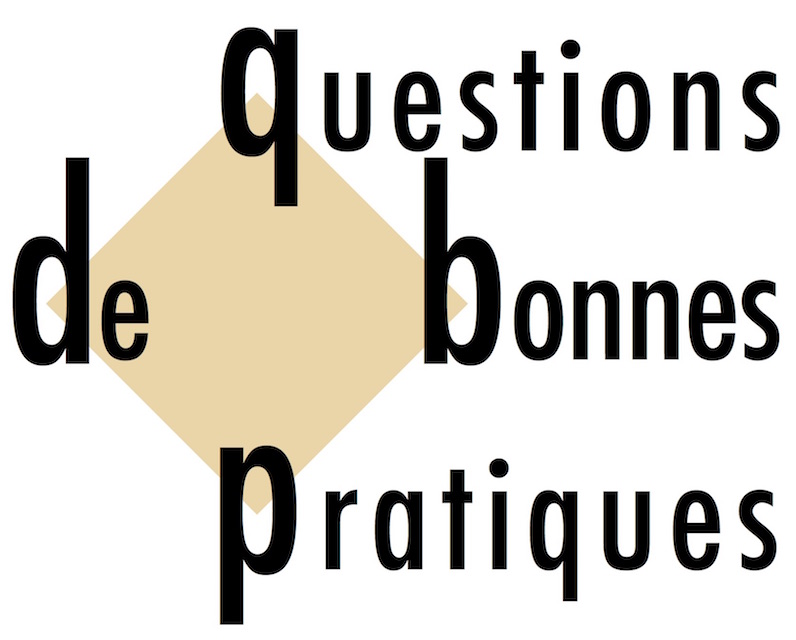Lien vers la table des matières de la bibliographie thématique, composée de documents réunis par un Groupe de travail constitué dans la perspective de préciser les spécificités de l'approche clinique de l'Antenne 110 par rapport aux "Evidence-Based Practices" : CLIQUER ICI.
Baker-Ericzén, M. J., Stahmer, A. C., & Burns, A. (2007). Child demographics associated with outcomes in a community-based pivotal response training program. Journal of Positive Behavior Interventions, 9(1), 52-60. http://dx.doi.org/10.1177/10983007070090010601
Dunlap, G., & Koegel, R. L. (1980). Motivating autistic children through stimulus variation. Journal of Applied Behavior Analysis, 13(4), 619-627. http://dx.doi.org/10.1901/jaba.1980.13-619
Harper, C. B., Symon, J. B. G., & Frea, W. D. (2008). Recess is time-in: Using peers to improve social skills of children with autism. J Autism Dev Disord, 38(5), 815-826. http://dx.doi.org/10.1007/s10803-007-0449-2
Koegel, L. K., Koegel, R. L., Harrower, J. K., & Carter, C. M. (1999). Pivotal response intervention I: Overview of approach. Research and Practice for Persons with Severe Disabilities, 24(3), 174-185.
Koegel, L. K., Koegel, R. L., Shoshan, Y., & McNerney, E. (1999). Pivotal response intervention II: Preliminary long-term outcome data. Research and Practice for Persons with Severe Disabilities, 24(3), 186-198.
Koegel, R. I., & Frea, W. D. (1993). Treatment of social behavior in autism through the modification of pivotal social skills. Journal of Applied Behavior Analysis, 26(3), 369-377. http://dx.doi.org/10.1901/jaba.1993.26-369
Koegel, R. L., & Koegel, L. K. (1990). Extended reductions in stereotypic behavior of students with autism through a self-management treatment package. Journal of Applied Behavior Analysis, 23(1), 119-127. http://dx.doi.org/10.1901/jaba.1990.23-119
Koegel, R. L., & Koegel, L. K. (1995). Teaching children with autism: Strategies for initiating positive interactions and improving learning opportunities (1 edition ed., p. 256). Baltimore: Brookes Publishing.
Koegel, R. L., & Mentis, M. (1985). Motivation in childhood autism: Can they or won't they? J Child Psychol Psychiatry, 26(2), 185-191.
Koegel, R. L., Good, A., Cerniglia, L., Murphy, C., & Koegel, L. K. (1988). How to teach pivotal behaviors to children with autism: A training manual.
Koegel, R. L., Koegel, L. K., & Brookman, L. I. (2003). Empirically supported pivotal response interventions for children with autism. In A. E. Kazdin (Ed.), Evidence-based psychotherapies for children and adolescents (pp. 341-357). New York, NY: Guildford Press.
Koegel, R. L., Koegel, L. K., & Carter, C. M. (1999). Pivotal teaching interactions for children with autism. School Psychology Review, 28(4), 576-594.
Koegel, R. L., Koegel, L. K., & McNerney, E. (2001). Pivotal areas in interventions for autism. Journal of Clinical Child Psychology, 30(1), 19-32.
Koegel, R. L., Koegel, L. K., Fredeen, R. M., Tran, Q. H., Sze, K. M., Bruinsma, Y. E. M., . . . more. (2005). Pivotal response treatments for autism: Communication, social, and academic development (1st edition ed., p. 312). Baltimore, Md: Paul H. Brookes Publishing Co.
Koegel, R. L., O'Dell, M., & Dunlap, G. (1988). Producing speech use in nonverbal autistic children by reinforcing attempts. J Autism Dev Disord, 18(4), 525-538.
Kuhn, L. R., Bodkin, A. E., Devlin, S. D., & Doggett, R. A. (2008). Using pivotal response training with peers in special education to facilitate play in two children with autism. Education and Training in Developmental Disabilities, 43(1).
Mohammadzaheri, F., Koegel, L. K., Rezaee, M., & Rafiee, S. M. (2014). A randomized clinical trial comparison between pivotal response treatment (PRT) and structured applied behavior analysis (ABA) intervention for children with autism. J Autism Dev Disord. http://dx.doi.org/10.1007/s10803-014-2137-3
Naoi, N. (2009). Intervention and treatment methods for children with autism spectrum disorders. In J. L. Matson (Ed.), Applied behavior analysis for children with autism spectrum disorders (pp. 67-81). Springer. http://dx.doi.org/10.1007/978-1-4419-0088-3_2
Nefdt, N., Koegel, R., Singer, G., & Gerber, M. (2010). The use of a self-directed learning program to provide introductory training in pivotal response treatment to parents of children with autism. Journal of Positive Behavior Interventions, 12(1), 23-32. http://dx.doi.org/10.1177/1098300709334796
Pierce, K., & Schreibman, L. (1997). Multiple peer use of pivotal response training to increase social behaviors of classmates with autism: Results from trained and untrained peers. Journal of Applied Behavior Analysis, 30(1), 157-160. http://dx.doi.org/10.1901/jaba.1997.30-157
Randolph, J. K., Stichter, J. P., Schmidt, C. T., & O’Connor, K. V. (2011). Fidelity and effectiveness of PRT implemented by caregivers without college degrees. Focus on Autism and Other Developmental Disabilities, 26(4), 230-238. http://dx.doi.org/10.1177/1088357611421503
Ringdahl, J. E., Kopelman, T., & Falcomata, T. S. (2009). Applied behavior analysis and its application to autism and autism related disorders. In J. L. Matson (Ed.), Applied behavior analysis for children with autism spectrum disorders (pp. 15-32). Springer. http://dx.doi.org/10.1007/978-1-4419-0088-3_2
Robinson, S. E. (2011). Teaching paraprofessionals of students with autism to implement pivotal response treatment in inclusive school settings using a brief video feedback training package. Focus on Autism and Other Developmental Disabilities, 26(2), 105-118. http://dx.doi.org/10.1177/1088357611407063
Schreibman, L.,Stahmer, A. C., Barlett, V. C., & Dufek, S. (2009). Brief report: Toward refinement of a predictive behavioral profile for treatment outcome in children with autism. Res Autism Spectr Disord, 3(1), 163-172. http://dx.doi.org/10.1016/j.rasd.2008.04.008
Stahmer, A. C. (1995). Teaching symbolic play skills to children with autism using pivotal response training. J Autism Dev Disord, 25(2), 123-141. http://dx.doi.org/10.1007/BF02178500
Stahmer, A. C. (1999). Using pivotal response training to facilitate appropriate play in children with autistic spectrum disorders. Child Language Teaching and Therapy, 15, 29-40. http://dx.doi.org/10.1177/026565909901500104
Stahmer, A. C., Ingersoll, B., & Carter, C. (2003). Behavioral approaches to promoting play. Autism, 7(4), 401-413.
Strauss, K., Esposito, M., Polidori, G., Vicari, S., Valeri, G., & Fava, L. (2014). Facilitating play, peer engagement and social functioning in a peer group of young autistic children: Comparing highly structured and more flexible behavioral approaches. Research in Autism Spectrum Disorders, 8(4), 413-423. Retrieved from Google Scholar.
Suhrheinrich, J., Stahmer, A. C., Reed, S., Schreibman, L., Reisinger, E., & Mandell, D. (2013). Implementation challenges in translating pivotal response training into community settings. J Autism Dev Disord, 43(12), 2970-6. http://dx.doi.org/10.1007/s10803-013-1826-7
Ventola, P., Friedman, H. E., Anderson, L. C., Wolf, J. M., Oosting, D., Foss-Feig, J., . . . Pelphrey, K. A. (2014). Improvements in social and adaptive functioning following short-duration PRT program: A clinical replication. J Autism Dev Disord. http://dx.doi.org/10.1007/s10803-014-2145-3
Vismara, L. A., & Lyons, G. L. (2007). Using perseverative interests to elicit joint attention behaviors in young children with autism theoretical and clinical implications for understanding motivation. Journal of Positive Behavior Interventions, 9(4), 214-228. http://dx.doi.org/10.1177/10983007070090040401



